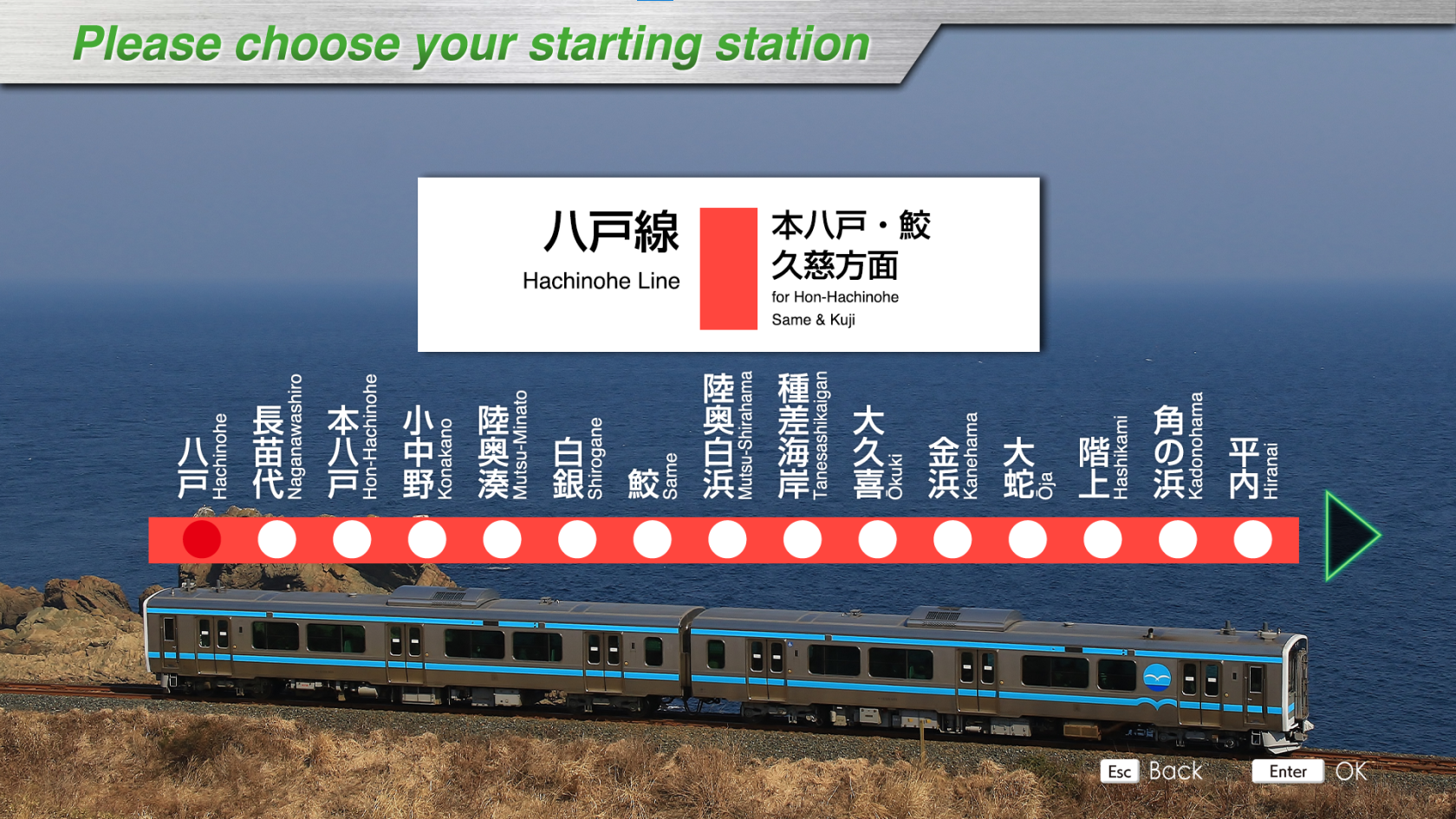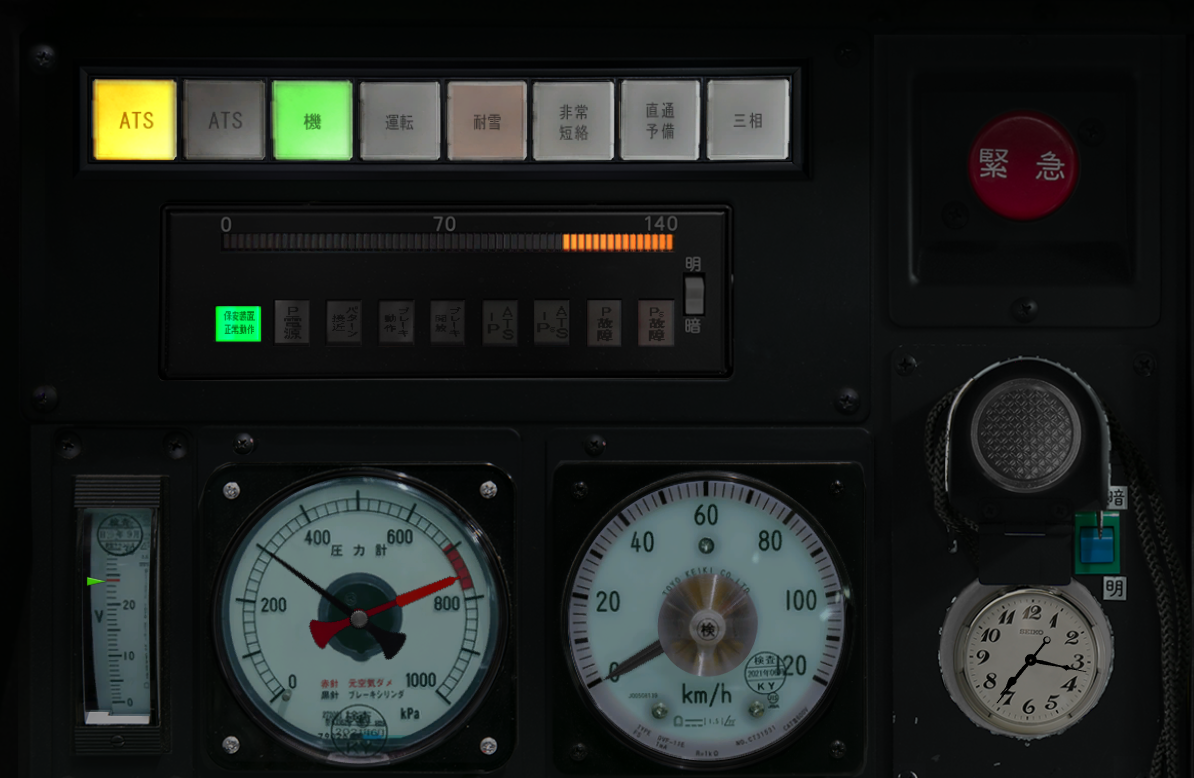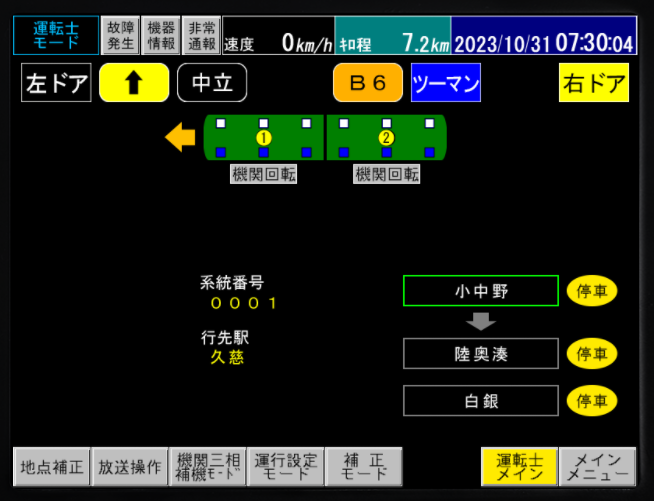Ligne Hachinohe
PrésentationIntroducing
La ligneThe Hachinohe relieLine la gare deconnects Hachinohe dansStation lain villeHachinohe deCity, Hachinohe,Aomori préfecturePrefecture d'Aomori, à la gare dewith Kuji dansStation lain villeKuji deCity, Kuji,Iwate préfecturePrefecture.
The d'Iwate.line Lawas lignefirst aopened été ouverte pour la première fois enin 1894 entre la gare debetween Shiriuchi Station (aujourd'hui gare de Hachinohe) et la gare denow Hachinohe Station) and Hachinohe Station (aujourd'hui gare denow Hon'hachinohe).hachinohe ElleStation), aand étéwas prolongéerepeatedly etextended miseand enopened to service à plusieurs reprises jusqu'enuntil 1930, datewhen àthe laquelleline lawas ligneextended ato étéKuji prolongéeStation, jusqu'àbringing la gare de Kuji, mettant ainsi la ligne dethe Hachinohe enLine serviceinto complet.full service.
AvecWith l'ouverturethe deopening l'extensionof de la ligne de train à grande vitessethe Tohoku Shinkansen entrebullet lestrain garesline deextension between Hachinohe etand Shin-Aomori enstations décembrein December 2010, etthe leline transfert de la ligne entre les gares debetween Hachinohe etand Aomori àstations, which had previously been on the Tohoku Main Line, was transferred to Aomori RailwayRailway, (quiand étaitis auparavantnow una tronçonline dewith lano ligneconnections principaleto Tohoku),other laJR ligneconventional Hachinohe est maintenant une ligne sans connexion avec d'autres lignes conventionnelles JR.lines.
EnIn octobreOctober 2013, le "TOHOKU EMOTION",EMOTION," una sightseeing train touristiquewith dotéa d'unrestaurant espacespace dethroughout restauration dans tout lethe train, abegan commencéoperation à circuler entre les gares debetween Hachinohe etand deKuji Kuji,Stations, principalementmainly leson samedisSaturdays etand les jours fériés.holidays.
La ligne deThe train estline diviséeis endivided deuxinto lignestwo distinctesseparate :lines: l'uneone entre la gare debetween Hachinohe etStation la gare deand Same pourStation lefor transporturban urbain,transportation, etand l'autrethe entreother between Hachinohe et la gare deand Kuji pourStation lefor transportinterregional interrégional.transportation.
The majeuremajority partieof dethe l'itinéraireroute longeruns lealong littoral,the notammentcoastline, laincluding côtethe deTanezaki Tanezaki,Coast, un sitea national d'unescenic grandebeauty beautéspot etand una lieubreeding deground reproductionfor pourpetrels. les pétrels. De la gare deFrom Hachinohe àStation la gare de Same, la ligne traverse des usines et des zones urbaines ; deto Same àStation, lathe gareline deruns Rikuchu-Nakano,through ellefactories traverseand desurban zonesareas; ruralesfrom etSame longeStation l'océan Pacifique ; et de la gare deto Rikuchu-Nakano àStation, lait gareruns dethrough Kuji,rural elleareas traverseand desalong zonesthe vallonnées.Pacific CertainsOcean; tronçonsand defrom laRikuchu-Nakano ligneStation offrentto desKuji vuesStation, surit l'océan,runs cethrough quihilly enareas. faitSome unsections itinéraireof populairethe pourline lesoffer passagersviews quiof peuventthe voirocean, l'océanmaking depuisit lesa fenêtrespopular duroute train.for passengers to see the ocean from the train windows.
DonnéesKey principalesdata
DistanceLinetotale de la lignelength : 64.9 kmNombreNumberdeofgaresstations : 24SystèmeSafetyde sécuritésystem : ATS-PsModèleTrainde trainmodel : Kiha E130-500(page en anglais)VitessesMaxmaximalesspeed :- Hachinohe ~ Kuji : 85 km/h
VitessesMaxaprèsspeedsignalafter signals :VitesseReducedréduitespeed (vert/jaune)green/yellow) : 65 km/hAttentionCaution (jaune)yellow) : 45 km/h- Speed restriction (yellow/yellow) : 25 km/h
Trajets :Routes:- Hachinohe ~ Kuji (429D)
Type"Local" - 2voiturescars - 24garesstations - 64.9 km - Hachinohe ~ Same (1431D)
Type"Local" - 2voiturescars - 7garesstations - 11.8 km - Hachinohe ~ Kuji (441D)
Type"Local" - 2voiturescars - 24garesstations - 64.9 km - Hachinohe ~ Same (1447D)
Type"Local" - 2voiturescars - 7garesstations - 11.8 km
- Hachinohe ~ Kuji (429D)
LesAs horairestimes n'étantare pasnot disponiblesavailable suron l'écranthe DICS,DICS ilscreen, estwe conseillérecommend d'utiliserusing lesthe tablestimetables horairesor oudisplaying d'afficherthe l'indicateurSTA STA.indicator.
DétailConsole de la consoledetail
SurOn lathe partieleft-hand gaucheside deof lathe console, onyou'll trouvefind :
EnAthaut,thedifférentstop,indicateurs.variousDansindicators.l'ordreIn this order :- ATS (
jaune)yellow):AlluméLitlorsquewhenl'the ATSestisen fonctionnement
operating. - ATS (
rouge)red):AlluméLitlorsquewhenl'ATSestisdéclenchétriggered. MoteurMotor (機)AlluméLitlorsquewhenlemotormoteurisfonctionnepoweredEn fonctionRunning (運転)AlluméLitlorswhenleenginemoteurisfait rouler le trainrunningRésistanceSnowà la neigeresistance (耐雪)UrgenceEmergencyCourt-short circuit (非常短絡)FreinsSafetyde secours à action directeBrakes (直通予備)Triphasé3-phase (三相)
- ATS (
indicators:
FonctionnementNormalnormaloperationdesofsystèmessafetyde sécuritésystems (保安装置正常動作)- P
alimentépower supply (P電源) ApprochePatterndu patternapproach (パターン接近)FreinageBrakeen coursoperation (ブレーキ動作)DéblocageBrakedu freinrelease (ブレーキ開放)- ATS-P
- ATS-Ps
DéfaillancePPfailure (P故障)DéfaillancePsPsfailure (Ps故障)
A
DICS noter qu'au-dessus de la console, à gauche, on a les cadrans des tensions d'alimentation (en kV) et de tension interne (en V)
Écran DICS
Ce train est équipé du système de surveillance DICSscreen (Diesel car Information Control System).
Au-dessousBelow seare trouvevarious différentes indications :indications:
PorteLeftgauchedoor (左ドア)IndiqueIndicatessiwhetherlestheportesleftdedoorsgaucheshoulddoiventbeêtreopenedouvertesatàthelanextprochaine gare.station.SensDirectiondeoflatravel,marche,ataumotorniveau du moteur (ne représente pas l'état actuel du levier de sens de la marche).level.PositionTransmissiondeposition:la transmission : NeutreNeutral (中性),changement de vitesseshift (変速),connexiondirectdirecteconnection (直結).L'indicateur deSpeed suppressiondeindicator,vitesse,presentprésentifsi actifactive (抑速1 / 抑速2)PositionPower/brakeduleverlevier de puissance/freinpositionIndicateurOne-personde train opéré seuloperation (ワンマン)ouoraTwo-personsdeuxoperation (ツーマン)PorteRightdroitedoor (右ドア)IndiqueIndicatessiwhetherlestheportesrightdedoorsdroiteshoulddoiventbeêtreopenedouvertesatàthelanextprochaine gare.station.
ViensNext ensuitecomes lathe représentationrepresentation duof the train. LesThe carréssquares représententrepresent lesthe portesdoors (droiteright enat haut,the gauchetop, enleft bas)at the bottom). LeThe carrésquare estis blancwhite siif lathe portedoor estis ouverte,open, sinonotherwise bleu.blue. L'indicateurThe "moteurengine enrunning" rotation"indicator (機関回転) indiqueshows siwhether lethe moteurcar's deengine lais voiture est en fonctionnement.
running.
Enfin,Finally, dansat lathe partiebottom inférieure,is on trouve una "identifiantsystem système"identifier" ainsiand que la gare dethe destination station (Kuji - 久慈). SurOn lathe droite,right, leyou'll trouvefind lathe garecurrent actuellestation etand lesthe next 2 prochainesstations, gares,with avecthe l'indicateurstop d’arrêtor oupassage de passage.indicator.
AvisPersonal personnel
opinion
C'estIt's unenot lignetoo pas trop complexecomplex a faire.line Lesto partiesmake. The Same - Ōkuki etand Rikuchū-Nakano - Rikuchū-Natsui sontsections plutôtare sinueuses.rather Duwinding. faitGiven duthe profilline's deprofile laand lignerolling etstock, duit's matériela roulant,rather c'estleisurely plutôt un voyage tranquille.journey.
LiensUseful utileslinks
WikipédiaWikipedia : https://fr.en.wikipedia.org/wiki/Ligne_HachinoheHachinohe_Line
Driver's Guide de conduite : https://docs.google.com/spreadsheets/d/1H7R4lfMNA8EnuSvzVVlOHqA-_LYPZ6TjGbp_C1YqVuQ/edit#gid=261872662
VidéoMovie deof lathe ligneline : https://www.youtube.com/live/x1zv0E5UQK0watch?v=eYd_yieqvxg
Tables horairesTimetables (enin japonais) japanese):
- Hachinohe ~ Kuji (429D) : https://docs.google.com/spreadsheets/d/1H7R4lfMNA8EnuSvzVVlOHqA-_LYPZ6TjGbp_C1YqVuQ/edit#gid=1421452860
- Hachinohe ~ Same (1431D) : https://docs.google.com/spreadsheets/d/1H7R4lfMNA8EnuSvzVVlOHqA-_LYPZ6TjGbp_C1YqVuQ/edit#gid=770400459
- Hachinohe ~ Kuji (441D) : https://docs.google.com/spreadsheets/d/1H7R4lfMNA8EnuSvzVVlOHqA-_LYPZ6TjGbp_C1YqVuQ/edit#gid=1330843814
- Hachinohe ~ Same (1447D) : https://docs.google.com/spreadsheets/d/1H7R4lfMNA8EnuSvzVVlOHqA-_LYPZ6TjGbp_C1YqVuQ/edit#gid=1542655935



